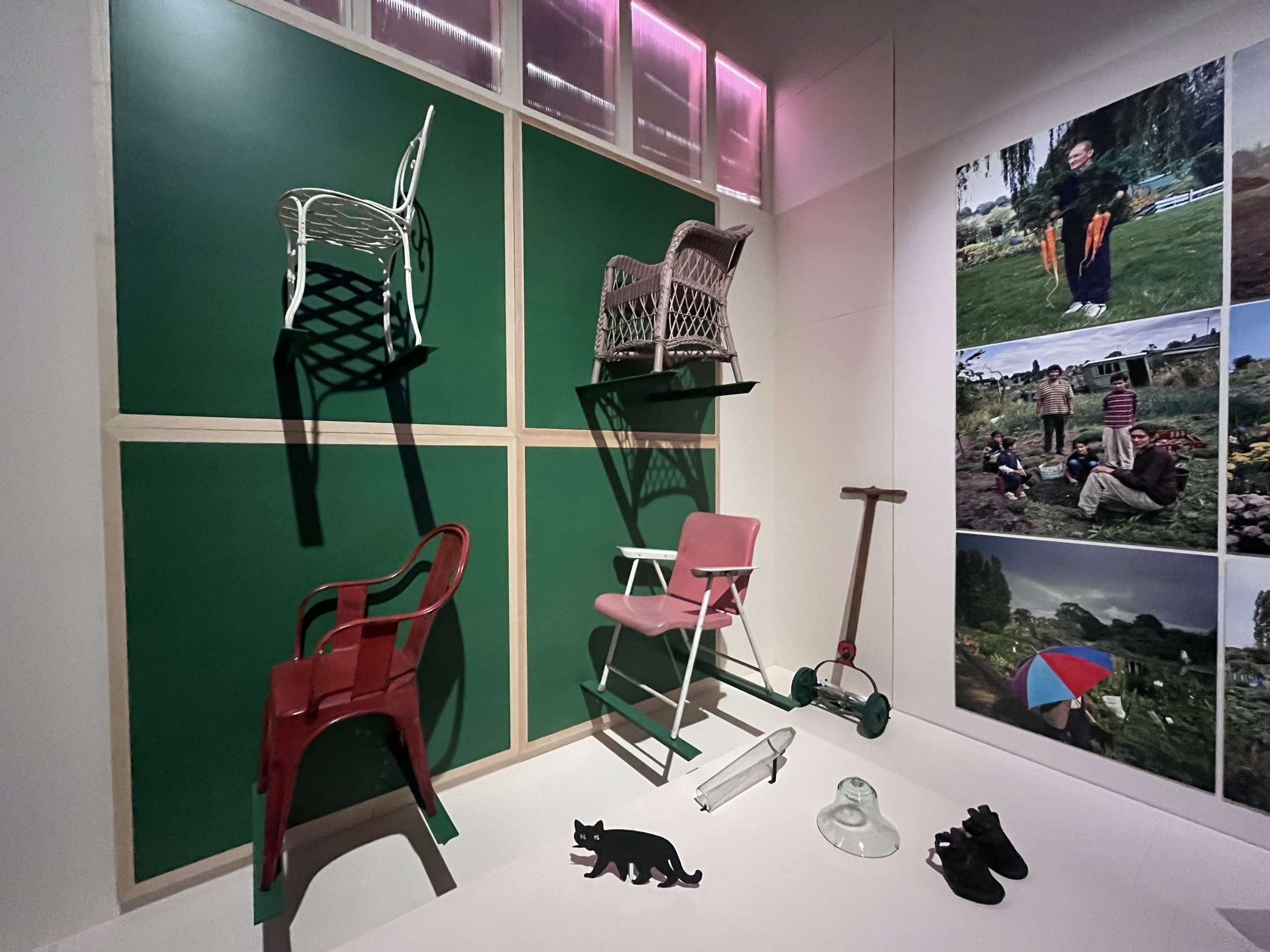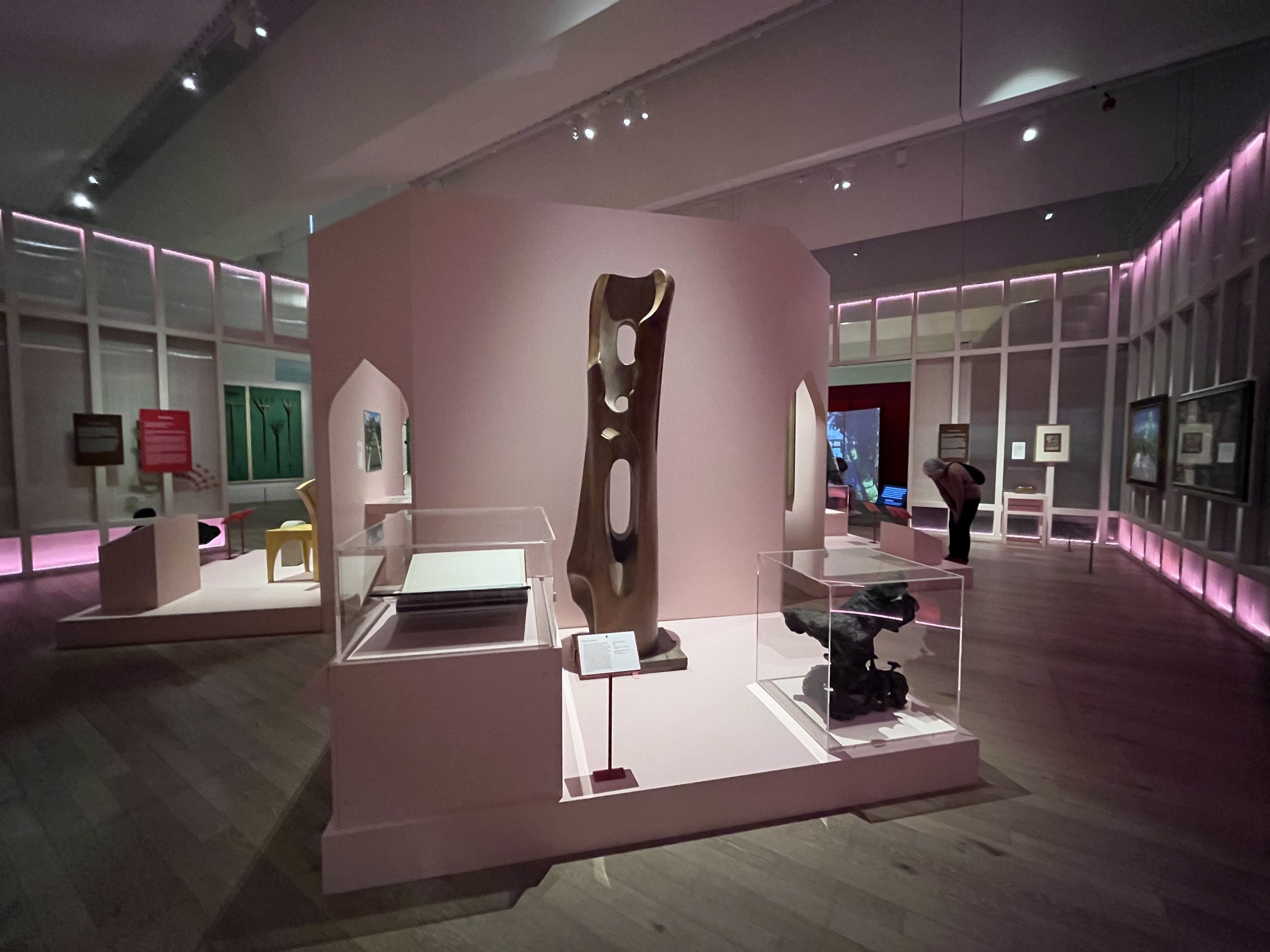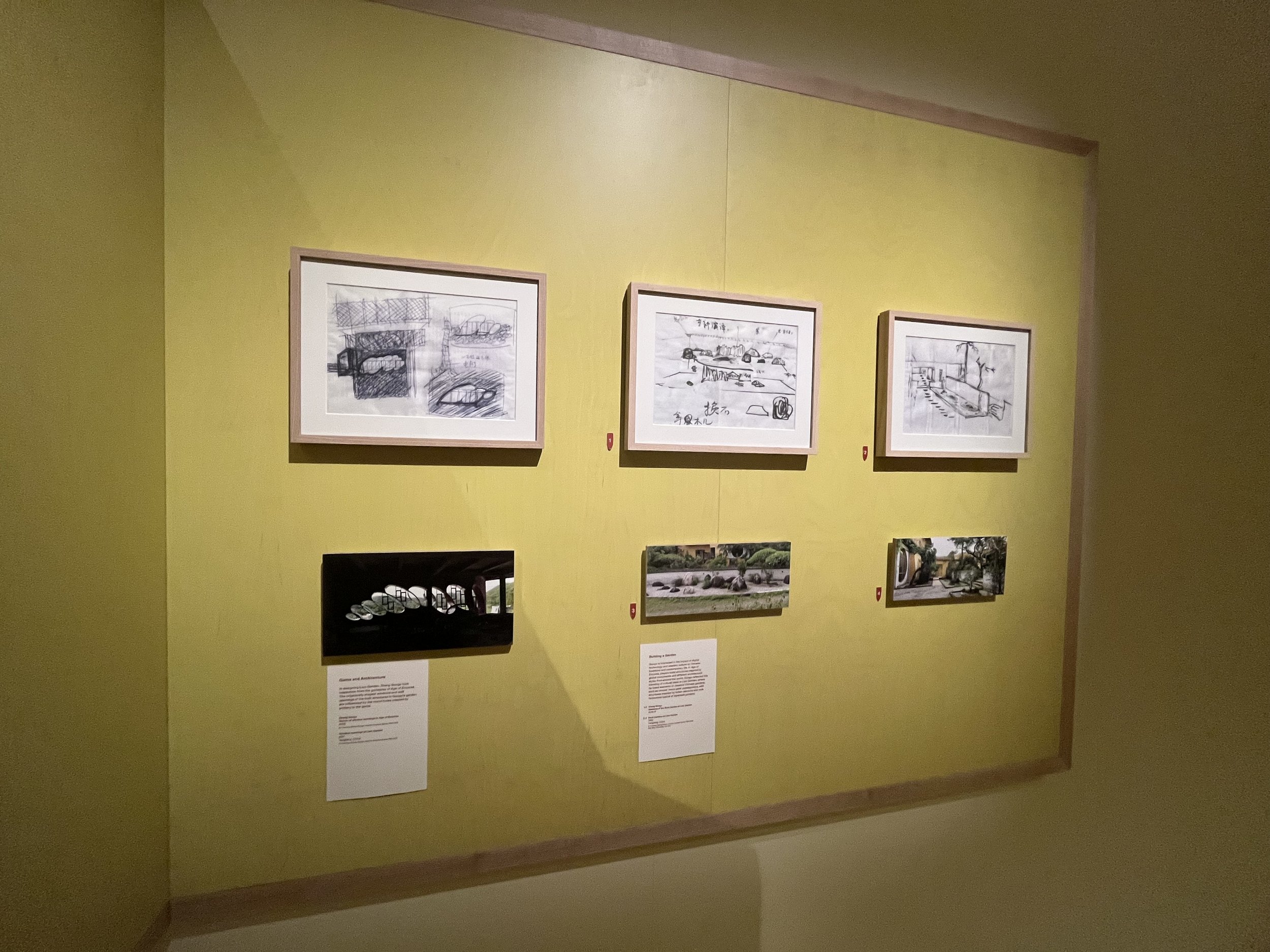Garden Futures.
Designing With Nature.
This past Friday, my mum and I hopped on the train to Dundee to visit the Garden Futures exhibition at the V&A Museum in Dundee. Although the V&A Dundee is only a short train journey away (about an hour, all going well), this was the first time either of us had been since it opened on 15 September 2018. As my mum put it, life just seems to get in the way, and she’s not wrong. Especially since lockdown, it feels as though life has gone into super speed.
Now that I’ve gone down to four days at work and have Fridays off to help manage my health, and with my mum having retired at the end of 2024, we’ve had more time to spend together. It was nice to make the most of that time this Friday and finally visit the museum.
The train journey itself was almost worth the trip. I love taking the train. I think it goes back to travelling up and down between Edinburgh and Carrbridge when I was younger with my mum and brother. We’d always play games and it just felt like such a happy, calm moment. There’s always a sense of going towards something, whether it’s a trip, an exhibition, or simply going home. The journey from Edinburgh to Dundee runs right along the coast and crosses both the Forth Bridge and the Tay Bridge, so on a rare, gloriously sunny day, the views through the hazy sunshine were something else.
Once we arrived in Dundee and made the (incredibly) short walk from the train station to the V&A, the Garden Futures exhibition was something else. As the V&A Dundee website promotes:
This sensory show digs deep into the history of modern garden design and reveals the vital role gardens play in our everyday lives through surprising and often unexpected stories.
From windowsill plants and manicured lawns, to allotments and green spaces in unlikely places, gardens hold different meanings for everyone. Explore groundbreaking garden design by visionaries like Piet Oudolf and Derek Jarman, alongside innovative work from leading artists, writers and designers, such as Duncan Grant, Jamaica Kincaid and William Morris.
Explore how gardens from across the globe excite and inspire, motivating us to have a go and create our own labour of love.
vam.ac.uk/dundee/whatson/exhibitions/garden-futures-designing-with-nature
Since hearing about this exhibition online I have been really eager to go. I’ve always been drawn to the natural world, to plants and everything that goes with them. I’ve had houseplants for as long as I can remember, and still have some from when I was fifteen or younger. One of them was even grown from a leaf cutting taken from one of my great-grandmother’s plants, which my mum now looks after.
I think it is something that runs in the family. My granddad on my dad’s side had three allotments throughout his life, and even into his nineties kept a thriving vegetable garden at my grandparents’ house. I’ve got the fondest memories of playing there, running around the stepping stones that circled the greenhouse, being allowed inside to see where the tomatoes were growing. It was always so hot and humid in there, with that sweet, earthy smell hanging in the air from the tomatoes.
Then there was the attempt to try and grow potatoes and vegetables at our house in Carrbridge, admittedly not the most successful and possibly some of the smallest potatoes you could grow, but it was the doing of it that mattered. Helping my mum with trimming back the lupins that dazzled at the front of the house, framing both sides of our porch (one of the warmest places in that old Victorian building).
Now, as an adult, even our flat is packed with what must be 100+ houseplants. Every outdoor surface available is covered in plants, with just enough room for a small path on our balcony to go out and water them, plus two small chairs and a table (all of which also have plants on them). Our allotment is just as crammed. We always end up with too many seedlings and not enough space, but I wouldn’t have it any other way. There’s something so gratifying about it all. Walking home with a bouquet of sweet peas and cosmos that we grew from seed, checking how much the tomato plants have grown in a week, watching it all come together. Right now, we’ve got what feels like an endless supply of lettuces and mangetout, and it’s just the best feeling. Eating in rhythm with the seasons and knowing where our food has come from and what has gone into it all.
Gardening, or just being around plants and the natural world, has so much power in it. There’s so much we don’t know or can’t fully grasp, but being in those spaces, surrounded by greenery, bees buzzing around you, tiny insects going about their day, or the odd neighbourhood cat coming by for a nosey, it feels like what life should be. It’s that simple, quiet kind of magic that makes everything feel a bit more grounded.
And it’s that magic and quiet power of gardening that this exhibition really celebrated. The exhibition took you through four distinct rooms, each inspired by different types of gardens:
Room 1: Paradise
Room 2: Garden Politics
Room 3: Testing Grounds
Room 4: The World as a Garden
Each space explored a different definition and understanding of what a garden is. The first room looked at some of the world’s oldest recorded gardens, including symbolic recreations of the Garden of Eden, as well as gardens designed around symbolic structures and layouts, sometimes to convey symmetry and order, or to represent the four elements: sky, water, earth and plants.
The second room reflected on the complex relationship between gardens and wider social, political and environmental histories, how something that can seem so gentle and personal is also deeply connected to systems of power, ownership and resistance.
The third room focused on gardens as places of experimentation and creativity, nurtured by communities, activists, artists and people around the world. It celebrated the garden as a testing ground, a space for imagination and play.
The fourth and final room brought together rustic D-I-Y with the more scientific side of gardening, from allotments and greenhouses to contemporary kitchen gardens, showing how gardening bridges instinct, tradition and innovation.
Woven throughout all four rooms were three key ideas that tied everything together:
Gardens as Miniature Worlds
Gardens as Sanctuaries
Gardens as Inspiration
What really stood out to me while going through the exhibition was the sheer volume of history and cultural knowledge it managed to tie back to. It felt as though our gardens, and how we interact with them, are central to who we are as individuals and as a society, with both the good and the bad.
Gardens offer us sanctuary, a place to escape the noise of the world around us. But throughout history, they’ve also been used as political tools, to control, to divide, to signal power. It’s that shift from the natural to the human-imposed that really struck me.
It was especially interesting viewing the exhibition through the lens of my research paper, where I’ve been exploring how natural landscapes can speak to who we are. This exhibition showed just how much power there is in even the smallest of green spaces, from a kitchen garden or windowsill planter to vast, designed landscapes. The meanings we attach to these spaces are deeply personal, but also shaped by wider forces, histories and systems.
For artists who garden, those gardens often feel so intrinsically entwined with their practice that they become one and the same. From the sculptor who created a garden to showcase his work to the public, to the artist who nurtured a naturalist garden for his students to enjoy and draw inspiration from, the gardens gave their practice life, offering another living vein for their ideas to take shape.
I don’t necessarily see my garden spaces, whether it’s the balcony, the allotment or even just a windowsill, as artworks, but they definitely feed something in me that feels very close to my practice. There’s a rhythm to it all, noticing what’s changed, what’s thriving, what needs more care, and that quiet kind of attention is the same kind of presence I try to bring when painting. That sense of layering too, of things emerging slowly over time, responding to light and season and mood, mirrors how I build up my ink pieces. It’s rarely rushed. And like in gardening, sometimes the most subtle changes are the most powerful.
Even just being in those spaces helps. It slows me down, clears the noise. Some of my best ideas come while I’m watering plants or sitting out on the balcony, half-thinking, half-watching a bee make its rounds. There’s something honest and grounding in that, no pressure, just small actions, small growth, and the occasional surprise.
Leaving the exhibition, I felt quietly inspired. Not in a grand or transformative way, but in that small, steady kind of way that gardens often move you - subtly, over time. Getting to step outside the city for the day, to be in a different space, to share it with my mum and spend time in one of those relationships I really treasure, reminded me how much those simple moments matter. It highlighted something I often forget - that the things which are good for me, the things that bring calm and connection, are also what leave me feeling most inspired. They help my practice grow in its own rhythm, gently, and in the right direction.


















